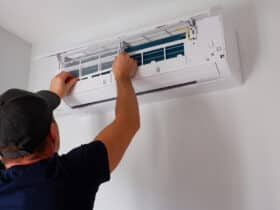A borrower in pre-foreclosure can typically solve the issue by making backdated mortgage payments, requesting a loan modification, or selling the home. However, foreclosure will follow if the borrower cannot settle their outstanding debt.
A deed instead of foreclosure is an option that allows borrowers to hand over their property’s doing to the lender in exchange for a settlement amount. But it’s not without risk.
Know Your Options
Typically, homeowners in pre-foreclosure will receive letters or calls from their mortgage lender, asking how they can work with them to resolve the existing debt. Some options for resolving the debt include working with the lender to modify their mortgage so they can afford to stay in the home or exchanging the deed to the property with the lender through a short sale or deed-in-lieu of foreclosure.
Many lenders, huge ones, offer foreclosure mediation programs. During this process, they will ask the borrower to request their mortgage loan documents to ensure they have all the information they need before a formal foreclosure proceeding starts. This can buy the homeowner time while also saving their credit score.
Homebuyers interested in purchasing a pre-foreclosure should contact their mortgage lender or a Realtor experienced with short sales. They should be prepared to respectfully approach the homeowner and ask if they would be willing to sell their home. If they say yes, the buyer should be ready to make an offer quickly to avoid losing the opportunity.
Know the Lender’s Process
In New York, lenders must give homeowners 90 days of notice before starting foreclosure procedures. However, in many cases, mortgage companies are already working with homeowners to modify their loans or help them find solutions so they can avoid foreclosure altogether.
Homeowners in pre-foreclosure homes can also take a deed instead of foreclosure, allowing them to hand over their homes and settle their debts. This will sometimes stop the foreclosure process and minimize the hit to their credit history.
During the foreclosure process, both sides have legal rights to discovery, which include interrogatories, requests for the production of documents, and more. This ensures the correct information is provided and all facts are considered.
Homebuyers interested in buying a property in pre-foreclosure can contact the homeowner directly and inquire about the situation. However, Blomquist warns buyers that some homeowners may be reluctant to sell their homes despite their precarious financial situation. Having remarkable tact and empathy is essential, she says. Regardless of how a potential seller responds, buyers should always make the purchase contingent on a complete title search and professional inspection.
Know the Lender’s Requirements
A homeowner in pre-foreclosure has a couple of options. They can catch up on their missed mortgage payments or try to negotiate a loan modification. This allows them to save their homes and avoid foreclosure. It also means that the lender doesn’t have to go through the process of evicting homeowners or selling their homes at auction.
Homeowners in pre-foreclosure can also try to sell their homes during this period. This lets them get out of their mortgage debt without the hassle of foreclosure and without hurting their credit history. It’s something that lenders prefer to do as well since it helps them avoid the expenses of foreclosure and the costs of evicting homeowners.
Unlike regular foreclosure properties, one of the downsides to buying a pre-foreclosure property is that it must be purchased in cash. This can be difficult for traditional home buyers who may need more capital. However, it is a good option for investors who can make the necessary arrangements. Bloomquist notes that a mortgage company can help by conducting a prequalification for the borrower and working with the seller to create an escrow account.
Know the Lender’s Terms
Once a borrower reaches pre-foreclosure, they typically have three to six months to reverse their default status by making up past due payments, working with their lender on a mortgage modification, or selling the property before the foreclosure process moves forward.
The homeowner’s lender will contact them via letter or phone to attempt to work out a solution that doesn’t involve the home going into foreclosure. However, they will begin foreclosure proceedings if they cannot resolve the issue.
If the homeowner doesn’t sell their home during this period, they may opt for a deed-in-lieu-of-foreclosure to transfer their home to the lender to settle the debt. They may also make a short sale, selling their home at market value.
Investors can often purchase properties for less than the market value during the pre-foreclosure process. This is a great way to get a bargain on real estate, but investors need to make any potential deals contingent on a thorough title search and professional home inspection.
Know Your Options
A homeowner’s pre-foreclosure process is complicated, but options are available to borrowers needing help. The best way to avoid foreclosure is by working with your lender as soon as possible and trying to find a solution that does not involve losing your home.
This can mean negotiating a short sale or deed instead of foreclosure, allowing homeowners to surrender their property to the lender to avoid the costly and lengthy judicial foreclosure process. Lenders are often willing to enter these transactions because it saves them money in the long run.
It is also a good idea to compare homeowners insurance quotes and consider bundling your auto and home insurance for a potential discount. Finally, homebuyers can still purchase homes in pre-foreclosure with conventional mortgages. However, it is essential to note that the pool of homes in this market will be smaller, and you may encounter challenges such as title searches. In these cases, it is wise to consult with an experienced attorney.














